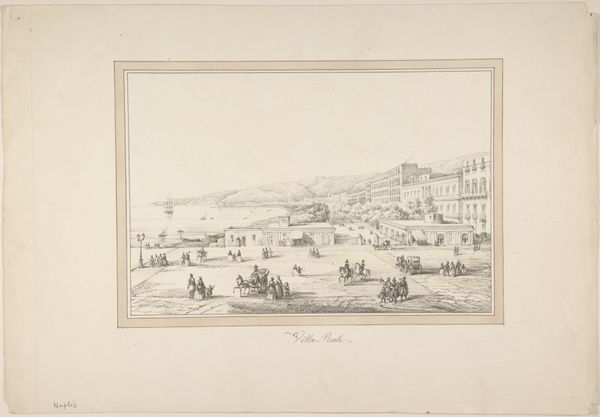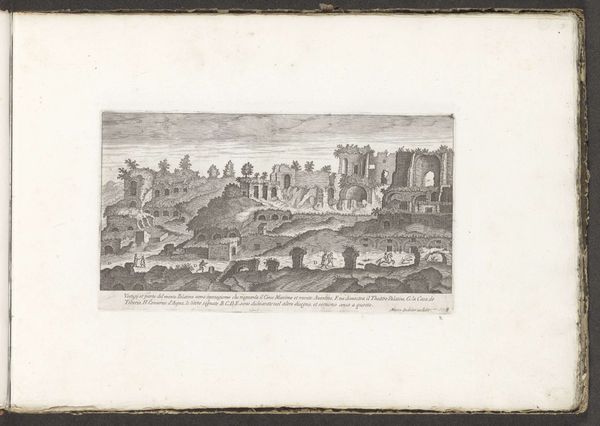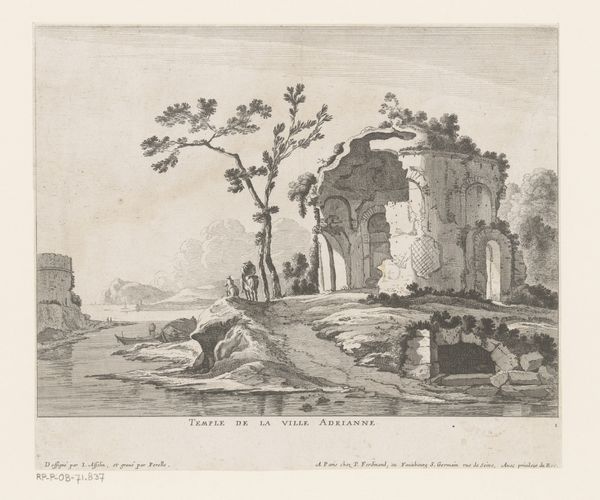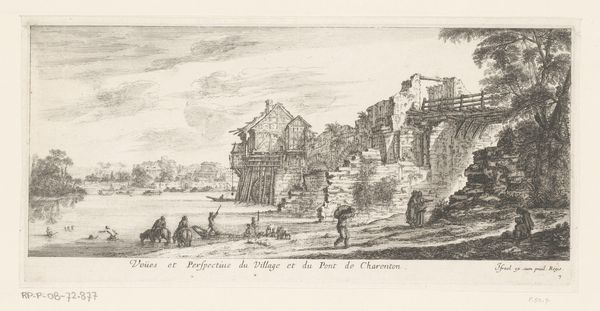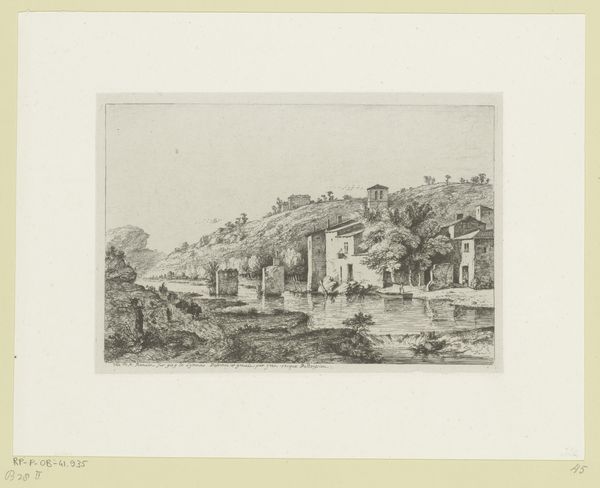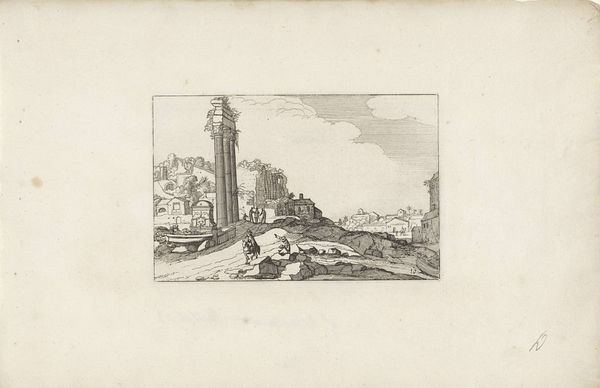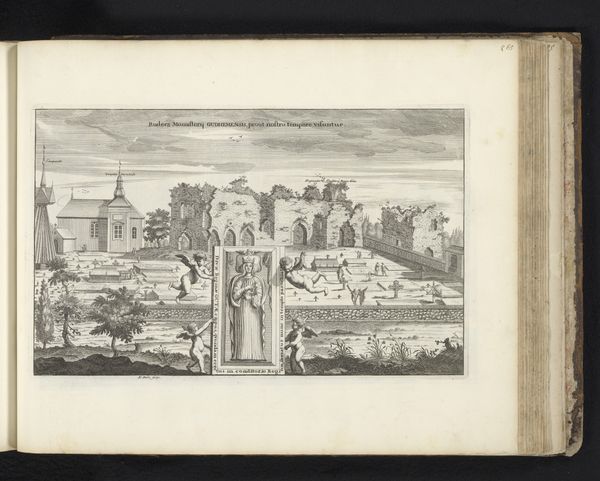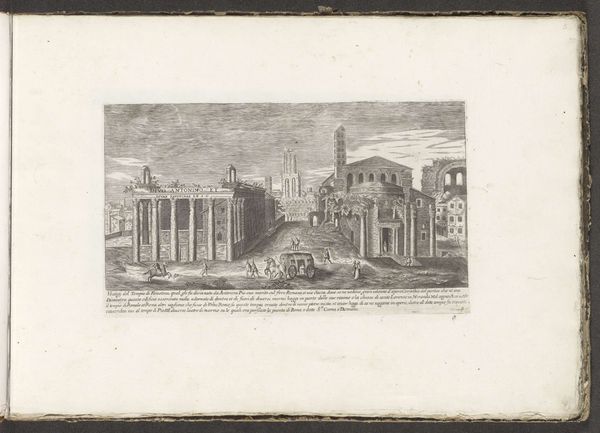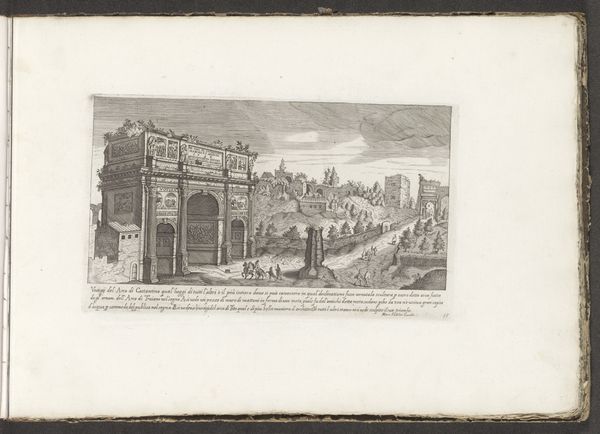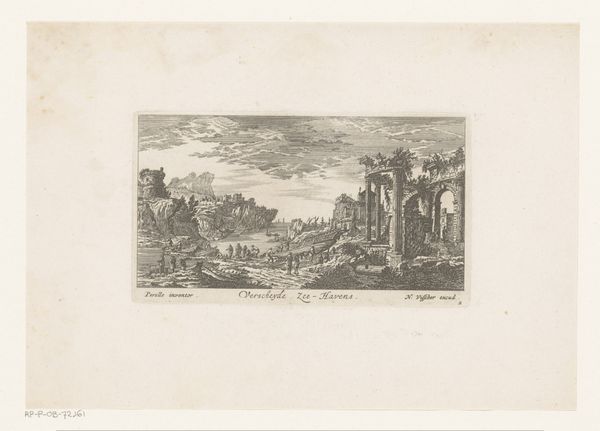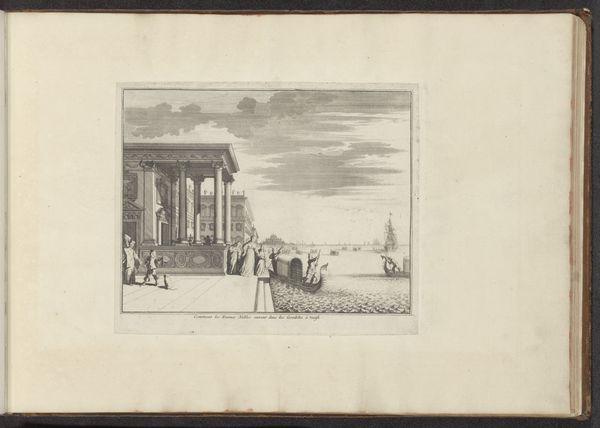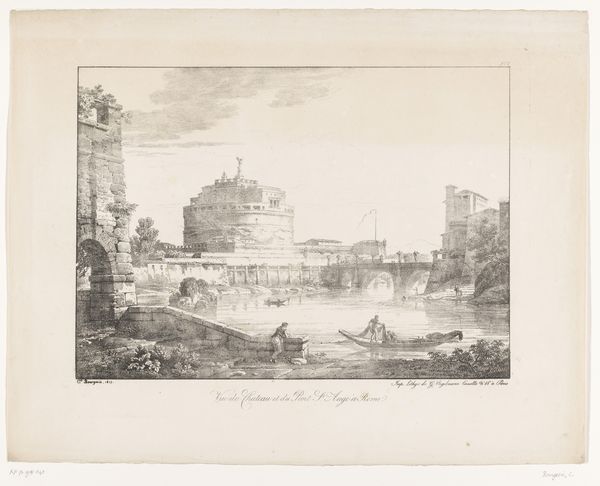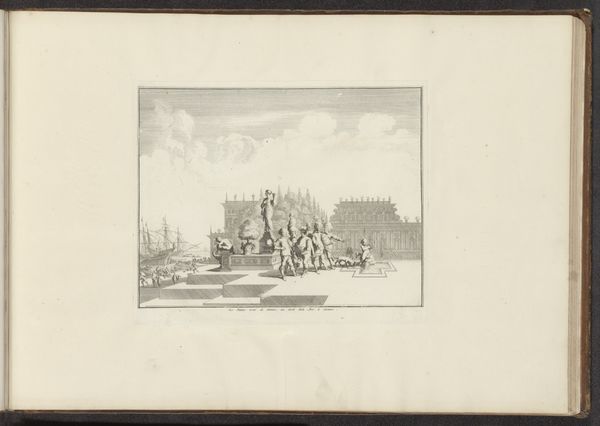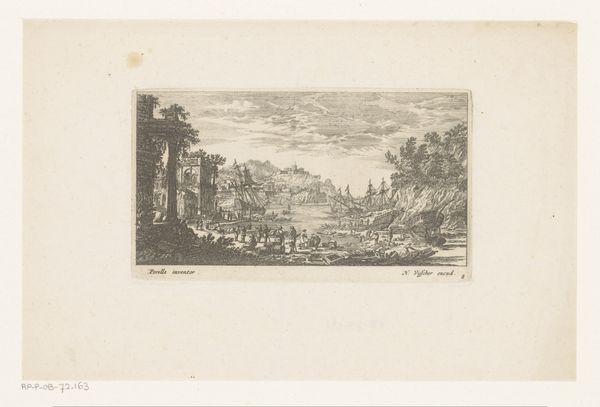
drawing, print, etching
#
drawing
#
neoclacissism
# print
#
etching
#
landscape
#
etching
#
cityscape
Dimensions: sheet: 10 1/8 x 13 9/16 in. (25.7 x 34.5 cm)
Copyright: Public Domain
Curator: The piece we're looking at is titled "View of Pompeii," an etching, dating back to the 19th century and residing here at the Met. The anonymous artist captures the somber ruins against the backdrop of Vesuvius. Editor: My initial reaction is one of serenity tinged with melancholy. The scene feels quite empty. The tones are delicate, lending it an air of quiet contemplation. Even the smoking Vesuvius in the background doesn't disrupt that sense of peace, oddly enough. Curator: The timing's interesting, isn't it? By the 19th century, Pompeii had been excavated for decades, becoming a key site for Neoclassical artists seeking to reconnect with the grandeur and presumed rationalism of the ancient world. This etching participates in a larger artistic project – a kind of pilgrimage to classical ideals during a time of rapid social change. Editor: Absolutely. It also evokes the visual vocabulary associated with ruins in art. Columns and monuments often symbolize fragmented ideas, while the natural elements like mountains—such as the menacing silhouette of Vesuvius, with its latent destructive power looming—highlight the temporal transience of human endeavor. It creates this dialogue of impermanence, a very consistent, meaningful message conveyed in images over the centuries. Curator: Right. And there’s a tension inherent in representing a destroyed city with such meticulous detail. The clean lines of the etching create a sense of order where, in reality, chaos reigned. Is the artist imposing a kind of idealized vision on a historical catastrophe? Editor: Perhaps. Or suggesting that even devastation can possess an enduring, awful beauty, once time has passed. The few people shown offer scale but are mostly swallowed by the scene. This also enhances a specific emotional component relating to how one relates to the site. Curator: It underscores how powerful institutions and societal trends can frame even the most poignant of ruins within particular ideologies. Editor: Precisely. It's an exercise in understanding not just the remnants of the past, but also what cultural lenses condition how we process that past, its signs and signifiers. Curator: Considering its artistic style in relation to its time and location enriches our awareness and reveals that history always serves the needs of its viewers. Editor: This etching invites us to reflect upon the fragile, visual reminders of civilization while they're actively evolving meaning to those viewing it at a particular moment in time.
Comments
No comments
Be the first to comment and join the conversation on the ultimate creative platform.
